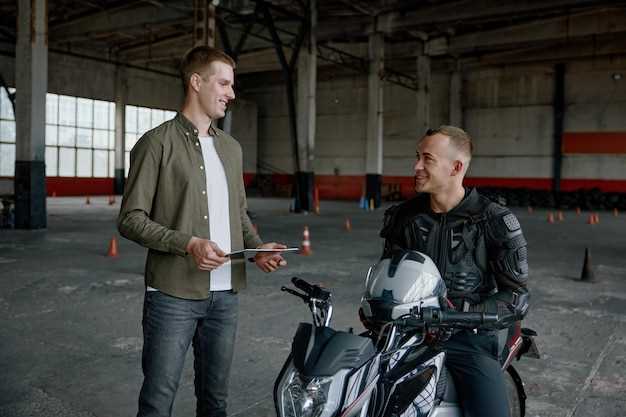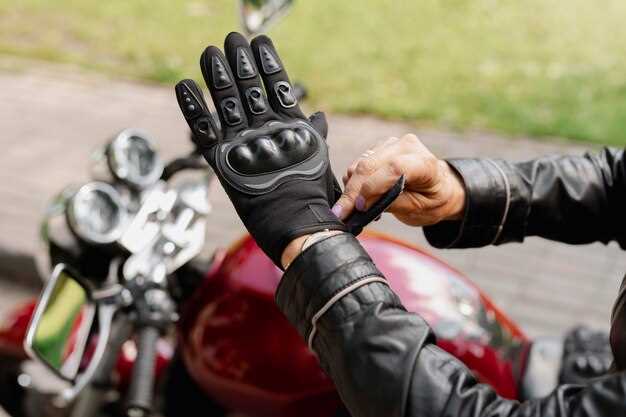
Basic Motorcycle Controls Explained

For every beginner motorcyclist, grasping the fundamental controls of a motorcycle is essential for cultivating confidence and safety on the road. This guide serves as a comprehensive overview of the primary controls you will encounter, ensuring that you are well-equipped to handle your motorcycle effectively. Understanding these basic functions not only enhances your riding experience but also reinforces your ability to respond quickly in various situations.
Motorcycles, while thrilling, can be complex machines with various components that require your attention. Each control has a specific purpose, and knowing how to operate them can make the difference between a smooth ride and a potentially hazardous situation. In this guide, we will cover crucial aspects such as the throttle, brakes, clutch, and gear shifter, providing clarity on how each element contributes to a safe and enjoyable ride.
As a beginner, familiarizing yourself with these controls is not just about learning to ride; it’s about building a foundation of knowledge that will serve you throughout your motorcycling journey. Whether you are taking your first class or are about to embark on your inaugural ride, understanding the mechanics behind motorcycle controls is key to becoming a skilled and responsible rider.
Throttle and Clutch Operations Explained

The throttle and clutch are two fundamental motorcycle controls that every beginner must understand to operate the bike safely and effectively. Mastering these controls helps new riders gain confidence and ensures smoother rides.
The throttle is located on the right handlebar and controls the amount of fuel and air mixture that enters the engine. When the throttle is twisted, it opens a valve connected to the engine, increasing the engine’s RPM. For beginners, learning to modulate the throttle is crucial. A gentle twist provides steady acceleration, while abrupt movements can lead to loss of control.
To practice throttle control, beginners should start in a safe, open area. Begin by gradually twisting the throttle to understand how the motorcycle responds. It’s important to correlate throttle input with gear selection and bike speed, allowing smoother transitions and enhancing overall handling.
The clutch lever is found on the left handlebar and is essential for changing gears. Pulling the clutch lever disengages the engine power from the rear wheel, allowing the rider to shift gears without causing damage to the transmission. Beginners should learn to use the clutch in conjunction with the throttle, especially during starts or when coming to a stop.
To shift gears properly, pull in the clutch lever fully, twist the throttle slightly (if needed), shift to the desired gear, and then gradually release the clutch while applying smooth throttle input. This process helps prevent stalling and ensures a seamless riding experience.
As beginners practice, it’s vital to develop a feel for the friction zone–the point where the clutch begins to engage without fully releasing. Mastering this will greatly improve a rider’s ability to maneuver in slow-speed situations, such as parking or navigating through traffic.
In summary, effective throttle and clutch operations are key components of motorcycle control. Understanding the relationship between these controls will help beginners build their skills and gain confidence on the road.
Mastering the Front and Rear Brakes

For a beginner rider, understanding the function and usage of both front and rear brakes is crucial for safe and effective motorcycle control. The front brake is typically more powerful and is responsible for the majority of stopping force. It operates through a lever located on the right-hand grip. Smooth application of the front brake enhances stopping efficiency and helps prevent skidding.
On the other hand, the rear brake is activated by a foot pedal and provides additional stopping power while helping to stabilize the motorcycle during deceleration. It is essential to use both brakes in unison for balanced stopping. Applying the front brake alone can lead to loss of control, especially in emergency situations.
As a beginner, practice is key to mastering brake control. Start by familiarizing yourself with the feel of each brake in a safe area. Gradually increase your stopping speed and distance to understand the difference in response between the front and rear brakes. Remember to apply brakes gradually to avoid abrupt stops or loss of traction.
Lastly, always be aware of your surroundings while braking. Recognize that different surfaces may require different braking techniques. Learning to adjust your braking strategy in relation to road conditions is a vital part of motorcycle controls that every beginner should master.
Using the Gear Shift Lever Properly
The gear shift lever is a vital control for motorcycle operation, especially for beginners. Understanding how to use it effectively can significantly enhance your riding experience. The gear shift lever allows you to change gears, which is essential for managing speed and engine performance.
First, familiarize yourself with the layout of the gear shifter. On most motorcycles, the gear shift lever is located on the left side of the bike, operated with your left foot. Typically, the gear pattern is a one-down, four-up configuration, meaning first gear is engaged by pressing down on the lever, while each subsequent gear is shifted up by lifting the lever.
When shifting gears, it is crucial to be smooth and deliberate. To shift into first gear, fully pull in the clutch lever with your left hand and press down on the gear shift lever. Gradually release the clutch while simultaneously giving the motorcycle some throttle. This process helps ensure a seamless transition to avoid stalling.
As a beginner, try to maintain a steady speed before shifting up. When you feel the engine is revving higher and the power is beginning to wane, it is time to shift to a higher gear. Pull in the clutch, shift up, and release the clutch smoothly while applying throttle. This technique will prevent engine lugging and encourage a smooth ride.
Always remember to listen to your motorcycle’s engine. It provides valuable feedback on when to shift. If you notice the engine struggling, downshift to regain power, while if the engine is revving excessively, upshift to optimize performance.
Practicing gear shifting in a safe environment will increase your confidence and help you master this essential control. Consistent practice with the gear shift lever will allow you to develop muscle memory, making it easier to shift smoothly when you are on the road.